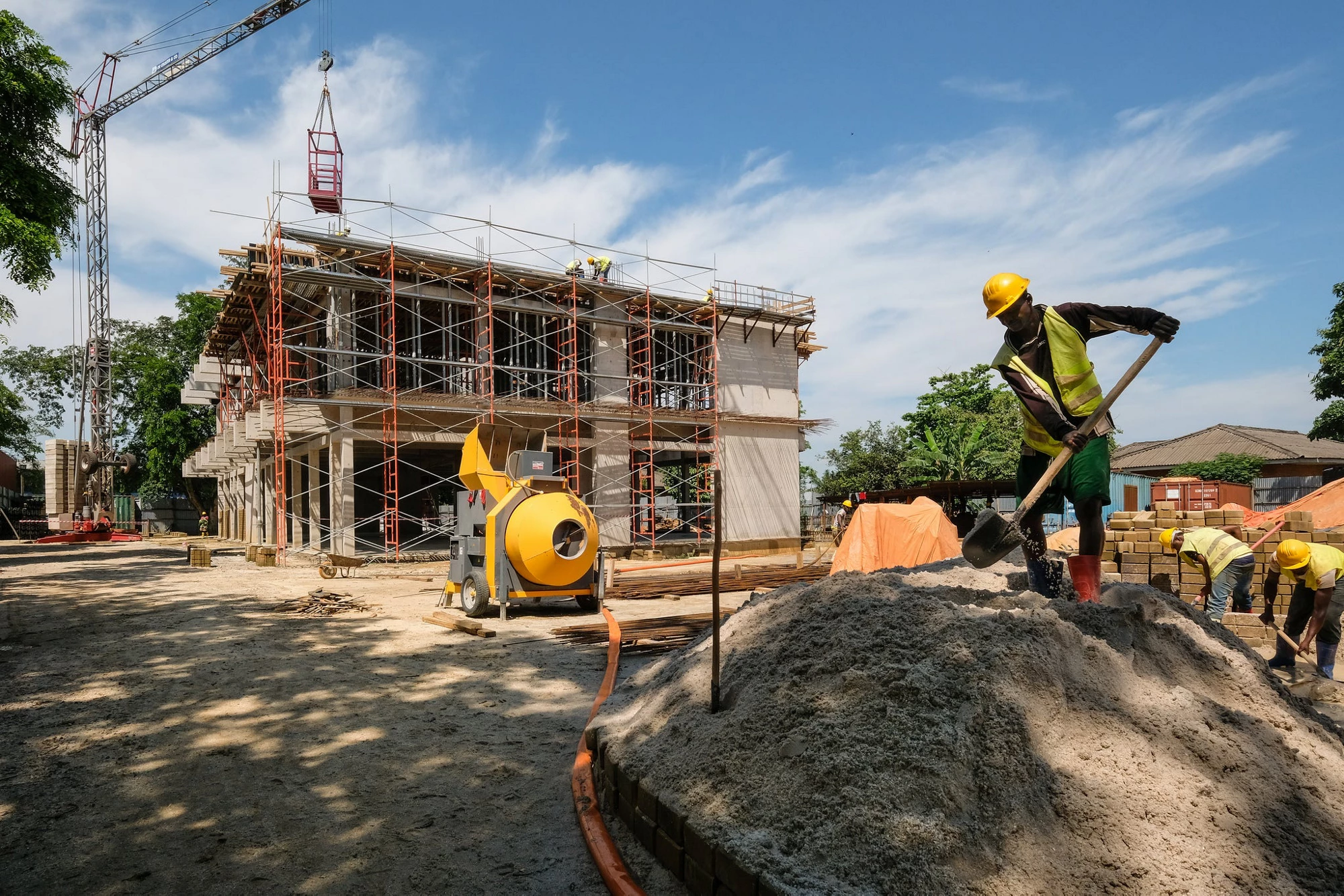Photo: CIFOR | Flickr Creative Commons
Africa is a continent rich in natural resources and boasts a large young, ambitious, and entrepreneurial-minded population. Harnessed properly, these endowments and advantages could usher in a period of sustained economic growth and increased well-being for all Africans.
However, a lack of modern infrastructure is a major challenge to Africa’s economic development and constitutes a significant impediment to the achievement of the Sustainable Development Goals.
According to a recent report by the World Bank, there are varying trends in Africa’s infrastructure performance across key sectors and regions. In telecommunications, Sub-Saharan Africa has seen a dramatic improvement in the quantity and quality of infrastructure, and the gains are broad-based. Access to safe water has also risen, with 77% of the population having access to water in 2015, from 51% in 1990. In the power sector, by contrast, the region’s electricity-generating capacity has changed little in more than 20 years. At about 0.04 megawatts per 1,000 people, capacity is less than one-third of that of South Asia, and less than one-tenth of that of Latin America and the Caribbean.
The PPP imperative
Facing the dearth of infrastructure funding, an increasing number of countries, notably emerging markets and developing economies (EMDE), are turning to Public-Private Partnerships (PPPs) in order to tap private capital. Although PPPs cannot fully solve this problem, they can provide significant financing where viable projects are carved out. Africa’s current state of infrastructure calls for massive adoption of the PPP model to accelerate infrastructure delivery.
Yet PPPs in Sub-Saharan Africa remain a very small market, with projects concentrated in only a few countries, namely, South Africa, Nigeria, Kenya, and Uganda. Together these account for 48% of the 335 total PPP infrastructure projects in the region in the past 25 years. In the past five years, PPP infrastructure projects in the region have mainly been concentrated in the energy sector (78%)—mostly renewables—followed by transport (22%) and water and sanitation (0.5%).
We recognize that some African countries are hesitant to embark on PPPs as a result of prior bad experiences with ill-prepared PPPs or even with less-than competent PPP project sponsors—as they say: “once bitten, twice shy.” There are ample PPP opportunities waiting to be realized on the African continent for the benefit of all stakeholders. The time for an infrastructure revolution via PPPs in Africa is now.
The question is: what must African governments do to drive PPPs?
Experience shows that 1) starting small then gradually embarking on larger PPPs based on lessons learned, and 2) higher risk allocation to government in the first generation of PPP projects, can provide a lot of advantages and go a long way in unlocking the flow of private capital into PPPs once investors and lenders develop enough comfort with the PPP environment of a country.
Here are two examples based on that experience, whose lessons could be applied to PPPs in Africa:
- Health sector PPP initiative in Bangladesh: About 400,000 people are diagnosed with kidney-related diseases every year in Bangladesh and about 20,000 patients develop acute renal failure. These patients have limited access to quality and affordable care. With the assistance of the International Finance Corporation (IFC), the government embarked on upgrading and running a total of 60 haemodialysis machines in two public hospitals. The project involves the procurement of dialysis equipment, installation of dialysis stations, and employment of all staff (other than doctors) at the participating hospitals. The maintenance of the machines is provided through a PPP. This was a modest, yet smart start by the government rather than pursing a larger-scale PPP in the healthcare sector, and through lessons learned may ultimately help with the design and implementation of a nationwide health PPP once the door has been opened for the injection of private capital.
- Renewable energy PPP in Pakistan: The southeast coastal belt of Pakistan is blessed with a wind corridor that has tremendous exploitable wind energy potential. By tapping into renewables, the government saw the opportunity to both bridge the gap in energy deficiency and ease pressure on deteriorating balance of payment conditions due to massive oil import bill. To attract the capital from private investors and lenders needed to launch the first generation of wind projects, the government came up with a very unique credit enhancement—wind risk guarantee. Essentially, it means investors will be compensated for an unfavorable deviation of average wind speeds from a pre-determined benchmark, versus the international practice where investors bear wind variability risks. By wisely carrying some additional risks to successfully deliver a number of wind projects under this scheme (approximately 300 MW) through PPP channels, Pakistan moved on to a feed-in tariff regime in 2012–2013 (which brought in another 500 MW of wind power) and are now on the cusp of launching a competitive tariff-based procurement scheme. This has done two things: it has widened the pool of developers and investors that have gained experience and knowledge of the Pakistan wind energy market; and it has given these investors the confidence to prepare themselves and get comfortable with the competitive tariff regime given the gradual risk transfer over a period of time.
Disclaimer: The content of this blog does not necessarily reflect the views of the World Bank Group, its Board of Executive Directors, staff or the governments it represents. The World Bank Group does not guarantee the accuracy of the data, findings, or analysis in this post.
Related Posts:
Nigeria blazes the trail for PPP disclosures with new web portal
6 Tips for plugging Africa’s infrastructure gap through public-private partnerships
Africa’s infrastructure: Five years on
The usual suspects: mitigating risks in African public-private partnerships
Five secrets of success of Sub-Saharan Africa’s first road PPP




Join the Conversation